Grin Eye Care

How Your Eyes Look is One Thing, But How They See is the Ultimate Priority for the Physicians at Grin Eye Care.
Greater advances in technology allow for safer procedures and the ability of physicians to specifically cater to each patient’s needs.
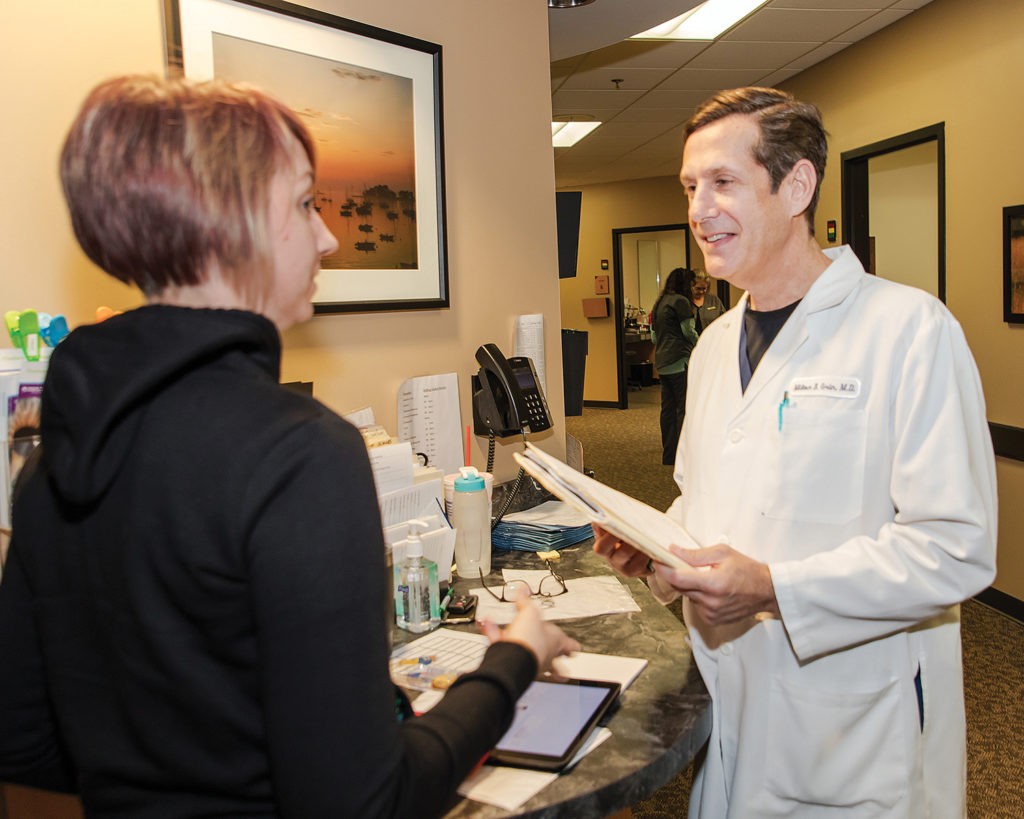
It has been expressed that the two best gifts to open daily are your eyes. Healthy eyes and clear vision are not to be taken for granted, so when certain conditions present and begin to affect your ability to see well, it’s nice to know there are proven experts in the field of ophthalmology who are dedicated to the best in service, technology, education and customer care and satisfaction. For 28 years, Grin Eye Care has been providing the metro area with the most advanced eye care practices, and when Dr. Milton Grin founded Grin Eye Care, his vision was clearly focused on one priority: to provide superior advanced care for his patients that is best suited for their individual lifestyles. Dr. Grin and his team take extreme pride in the care they provide, not only for the vision of their patients, but also for their overall well-being.
Upon completion of his Bachelor of Arts and Doctorate of Medicine degrees from the University of Missouri’s six-year intensive program in Kansas City, Dr. Grin completed his internship at Saint Luke’s Hospital and then received his training in ophthalmology at the Eye Foundation of Kansas City, where he also served as Chief Resident. Subsequent to his residency, Dr. Grin served on the faculty at the Eye Foundation where he trained residents in the practice of cataract surgery. It was during that time Dr. Grin decided to open his own private practice, establishing Grin Eye Care in 1989.
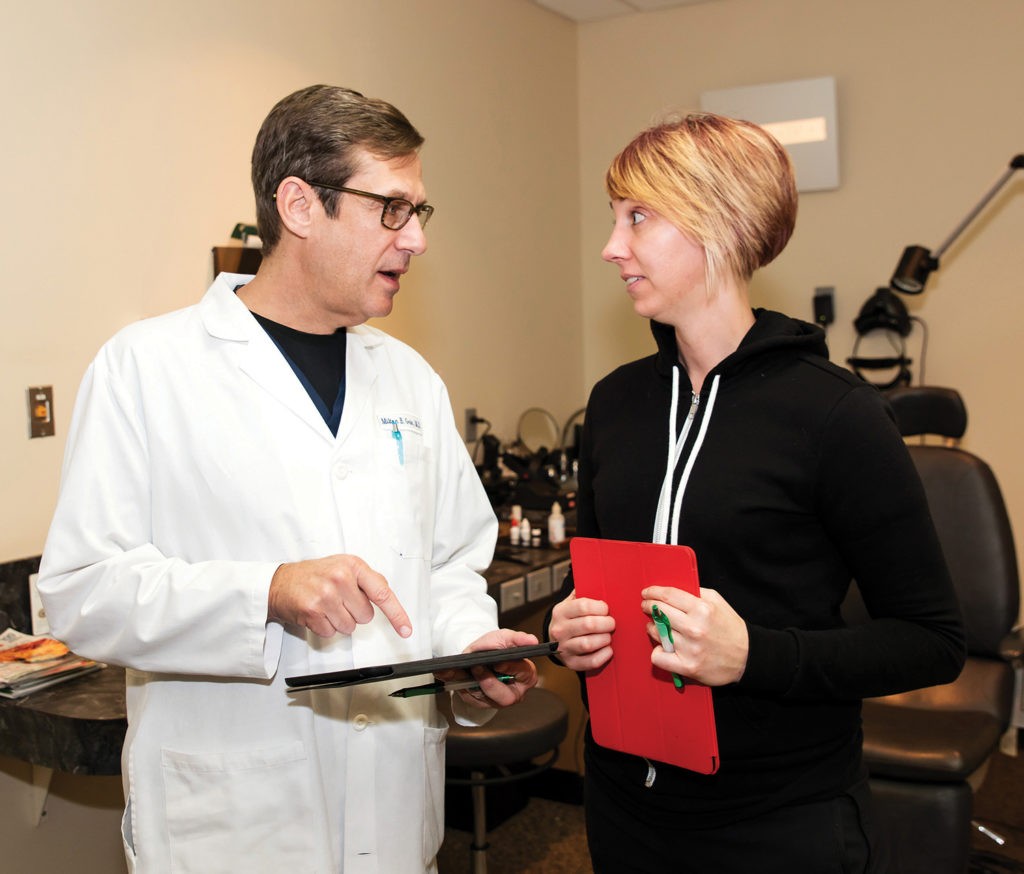
An award-winning physician, Dr. Grin has been recognized as America’s Best Ophthalmologist in LASIK and Refractive Surgery; America’s Top Ophthalmologist; and Most Compassionate Doctor. And it is no surprise, either, that year after year he receives the Patient’s Choice Award.
Dr. Grin has extensive experience in the practice of refractive surgery and is most specifically passionate about LASIK. With a strong desire to remain on the leading edge of medical education and technology, Dr. Grin has remained on the forefront of refractive surgery technology and operates using only state-of-the art technologies, which include the application of the VISX Star 4 Eye Tracker Laser system with Wavefront capabilities.
Because every person and every case is unique, Dr. Grin is able to use his expertise and knowledge to thoroughly evaluate whether or not a patient is suited for refractive surgery. And because complete patient satisfaction is of top priority for Dr. Grin and his team, that has catapulted the experts at Grin Eye Care to become leaders in the LASIK industry.
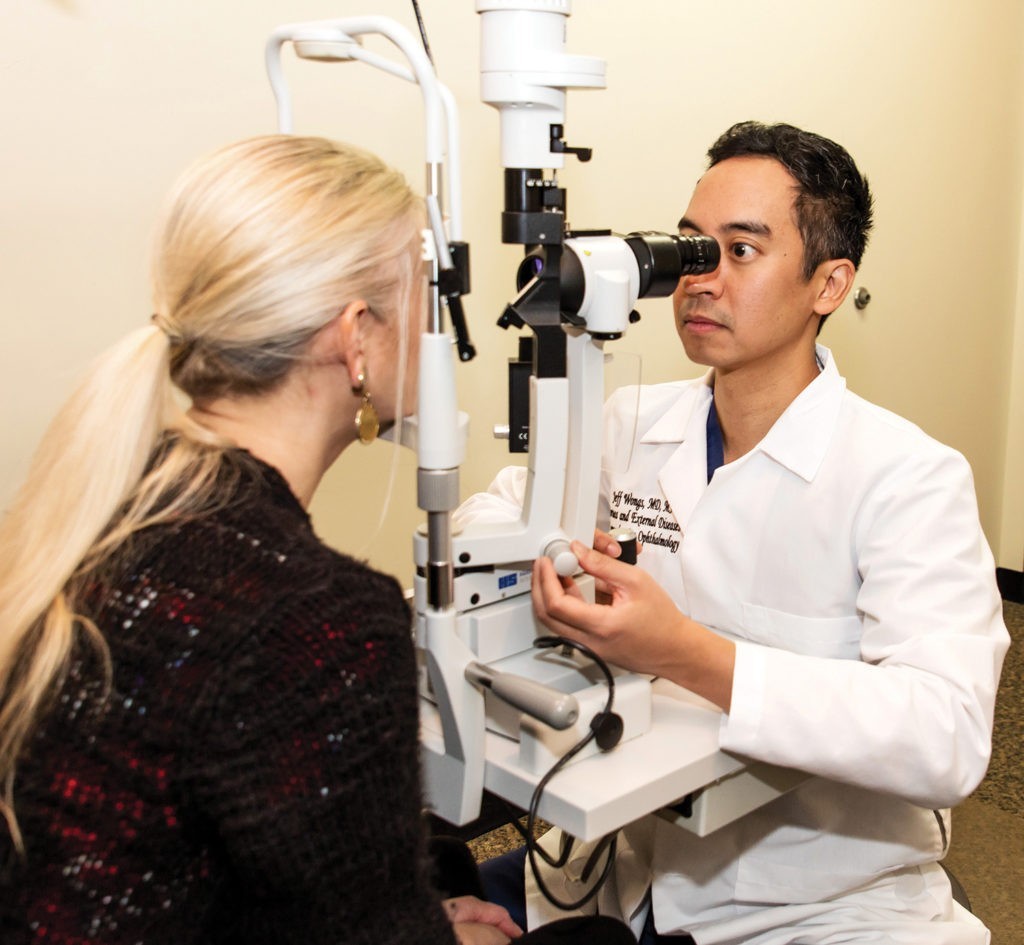
When Dr. Jeff Wongskhaluang (“Dr. Wongs”) joined Grin Eye Care in 2015, his impeccable professional resume quickly catapulted him to the height of the prestigious ranks within Grin Eye Care. Not only is he highly-educated and fully-equipped with a strong intellect, he is equally passionate about what he does and genuinely and effectively conveys education, compassion and understanding to his patients in a confident, yet relaxed manner. In other words, with your eyes under the care of Dr. Wongs, you know you are in excellent hands.
Prior to arriving at Grin Eye Care, Dr. Wongs, originally from Los Angeles, was on the faculty at the University of Missouri – Columbia, where he had previously completed a fellowship in cornea and external diseases. He earned his undergraduate degree from the University of Southern California and subsequently a Master of Science degree in physiology and a Doctorate in Medicine at the Chicago Medical School. After completing an internship in internal medicine at Lutheran General Hospital in Park Ridge, Illinois, he completed his residency at Cook County Hospital in Chicago.

At Grin Eye Care, Dr. Wongs performs both standard and complex cataract surgery, secondary IOL placement, PKP, DALK, DMEK, DSAEK, and keratoprosthesis surgery. The refractive procedures in which he is well-versed include LASIK, PRK, and laser-assisted cataract surgery.
Although Dr. Wongs specializes in a variety of ophthalmologic procedures, he is excited about his work with corneal collagen cross linking, newly approved by the FDA for practice in the United States, but is has been performed worldwide since the early 1990s.
“With this procedure, a lot of patients could avoid a corneal transplant,” explained Dr. Wongs. “It helps save eyes.”

In order to understand what corneal collagen cross-linking is, however, it is important to understand what keratoconus is. Clinically speaking, keratoconus occurs when the cornea, the clear, dome-shaped window at the front of the eye, thins out and bulges like a cone. Because your cornea focuses light into the eye, when it is misshapen, it brings light rays out of focus. As such, vision becomes blurry and distorted, which can make routine tasks such as reading or driving a challenge. Doctors are uncertain as to the causes of this disease but it does appear to have genetic tendencies, as about one in 10 people with keratoconus have a parent who also has it. This disease usually presents in one’s late teens to early 20s and the vision symptoms steadily worsen over the next 10 to 20 years. It can affect both eyes but have differing symptoms in each eye. In its early stages symptoms may include mild blurring of the vision, slightly distorted vision, increased light sensitivity and glare, and eye redness or swelling.
As the disease progresses, nearsightedness may worsen or astigmatism may increase. Patients may find they need to get a new eyeglass prescription too. Contact lenses may not fit well either. As the disease goes from the early stages to the late stages, the cornea can begin to swell and start to scar. When it has scar tissue, it loses its smoothness and becomes less clear. This is what causes the blurry or distorted vision.
“When viewed from the side, the shape of the eye affected by keratoconus resembles a football instead of a baseball,” explained Dr. Wongs.
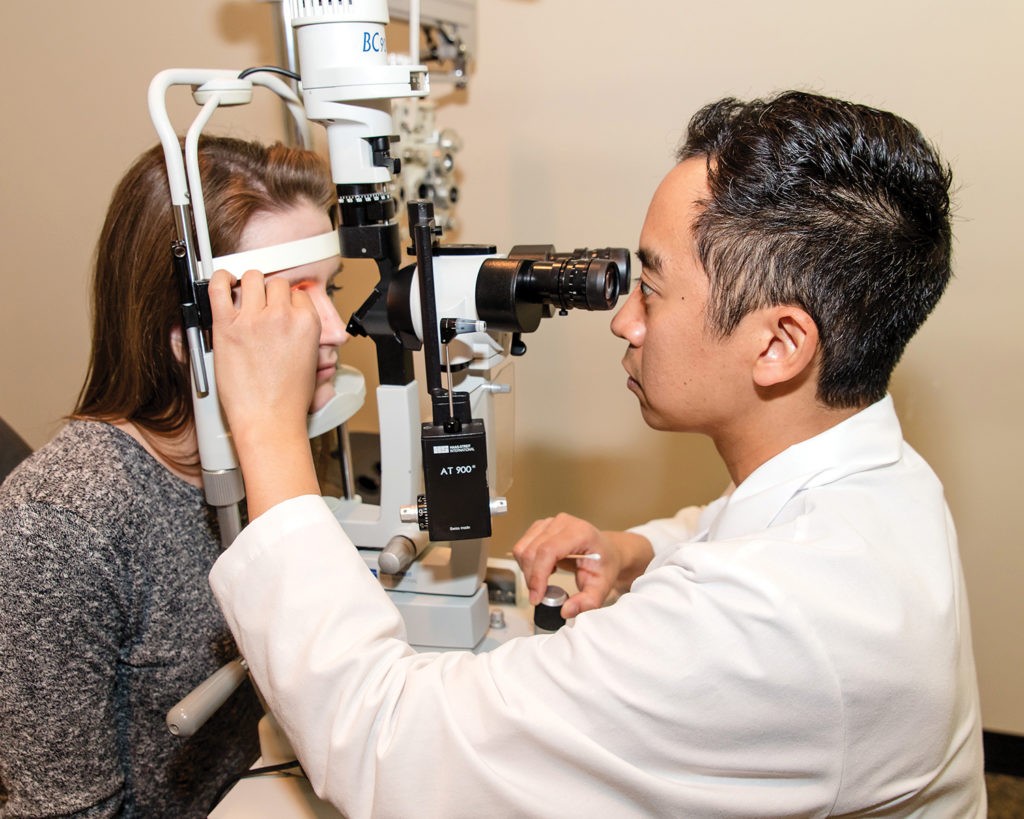
Keratoconus is quite common and occurs in one of 2,000 people in the general population. A progressive disease, there was formerly no means by which to halt that progression until now.
A multi-factorial disease, one can have a genetic predisposition to it but there is no gene expressly identified with it. It may also be associated with Marfan Syndrome, Ehlers-Danlos or Down’s Syndrome. Dr. Wongs indicated, however, that across the board, the ones who have it the most suffer from allergies, which generally give rise to persistent eye rubbing.
“This disease is also associated with sleep apnea and floppy eyelid syndrome,” Dr. Wongs said.
Touting corneal cross linking as one of the latest and greatest in cornea care, it enjoys roughly a 90% success rate, and Dr. Wongs is excited about the future of this procedure and what it means for patients.
“With corneal cross linking, we are able to halt the progression of keratoconus,” he indicated. He further elaborated that when it is successful, patients do not need to undergo a corneal transplant. Plus, there is no worry about rejection as there is with a transplant.
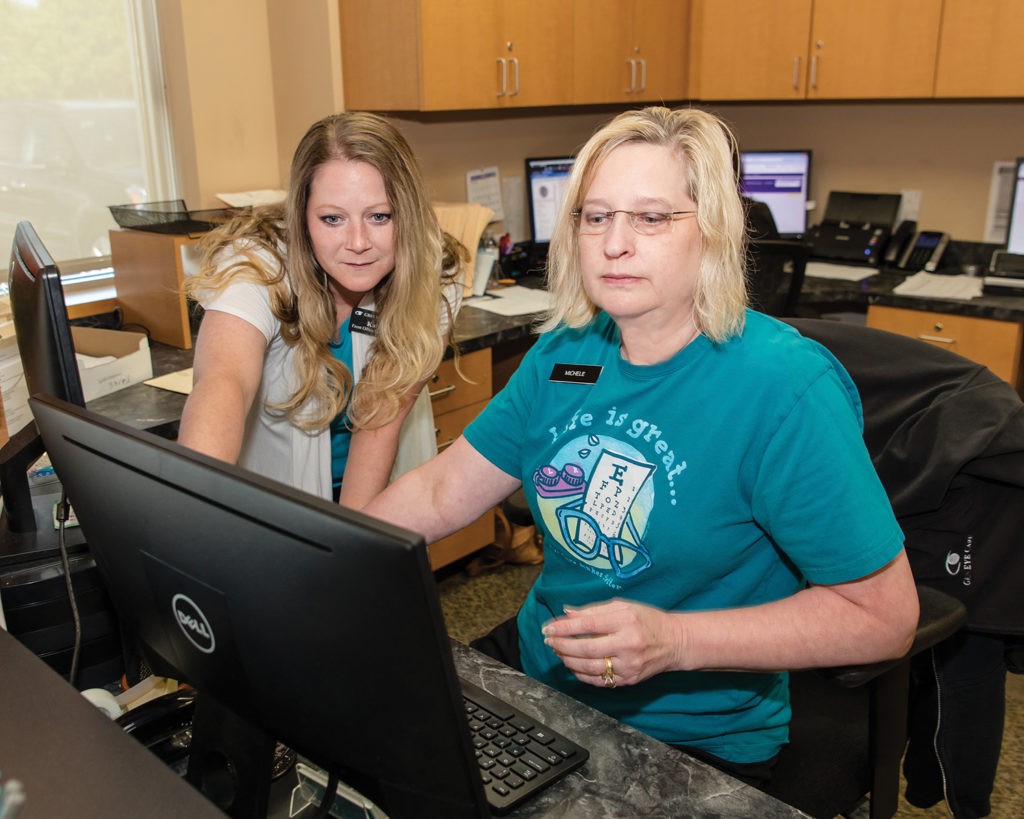
“With respect to transplants, it is the last line of defense,” he said. “Corneal cross linking offers the best visual outcome with little side effects and can be performed on an out-patient basis.”
Although alleviation of symptoms may take a while and patients may realize slight discomfort post-procedure, it could take up to six to twelve months for the cornea treated to fully stabilize.
“This is more of a delayed gratification procedure,” noted Dr. Wongs, who indicated that patients must undergo routine eye examinations post-procedure and administer antibiotic and steroid eye drops. “A bandage contact lens is also placed on the eye to protect it as it heals.”
Dr. Wongs pointed out that doctors are also discovering new uses for corneal cross linking, such as for the treatment of corneal ulcers, postoperative ectasia, pellucid marginal corneal degeneration and even eye infections.
The procedure itself is typically a one-time operation but it can be repeated. The physician will treat one eye at a time, with a couple of weeks between procedures. Before the eye is treated, it is numbed with numbing eye drops and some oral medications are administered to relax the patient. The entire procedure usually takes an hour to complete. It is done in-house at the flagship office of Grin Eye Care in Olathe, Kansas. More invasive surgeries, such as transplants and tumors, etc., are performed in a surgical setting.
Also certified in micro-invasive treatment for glaucoma, Dr. Wongs treats patients with iStent, a new procedure approved by the FDA in 2010.
“This is a new way of treating glaucoma at the time of cataract surgery,” he expressed. A tiny device no bigger than the size of Lincoln’s nose on the penny, the iStent is the smallest device that can be implanted in the body. The purpose of this device is to reduce intraocular pressure (IOP) in adult patients with mild to moderate open angle glaucoma and who are currently being treated with ocular hypotensive medication. It is indicated for use in conjunction with cataract surgery.
“It can be an effective way to get off the eye drops typically prescribed for glaucoma,” explained Dr. Wongs.
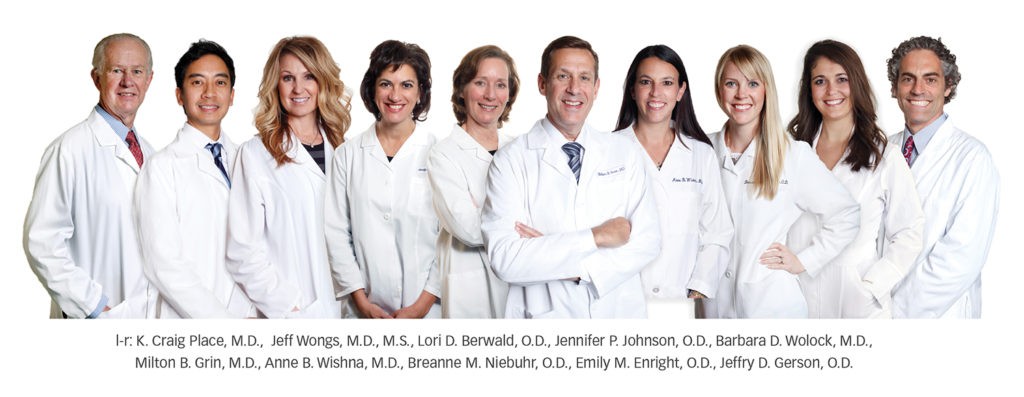
More than just a corneal specialist, Dr. Wongs works extensively in refractive surgeries and with all external diseases of the eye.
“I treat all issues on the surface of the eye, which include dry eyes, allergies, pterygia, infections, ocular surface tumors, to name a few,” noted Dr. Wongs, whose enthusiasm for what he does can barely be contained.
“I love microsurgery,” he smiled. “I really enjoy practicing cutting edge medicine and surgery.”
Dr. Wongs remains highly confident about the future of eye care in general, and looks forward to continually providing patients the best in treatments, procedures, technology and overall care in the years to come.
“The more advanced we get, the safer the procedures are and the better we, as physicians, are able to specifically cater to each patient’s needs. Now, each patient can receive individualized treatment, that not only relies on the surgeon, it also ensures that the technology is in the right hands.”
For more information on corneal collagen cross linking for patients with keratoconus or other ophthalmologic procedures, visit Grin Eye Care online at grineyecare.com or call 913.829.5511. Grin Eye Care has offices in Olathe, Leawood, Grandview, Ottawa and Lawrence.

5 LOCATIONS TO SERVE YOU
21020 W. 151st St., Olathe, KS 66061 | 4601 W. 109th St., Ste. 100, Leawood, KS 66211
1020 Main St., Grandview, MO 64030
316 S. Main St., Ottawa, KS 66067 (Dr. Wongs) | 2600 Iowa St., Lawrence, KS 66046 (Dr. Wongs)



